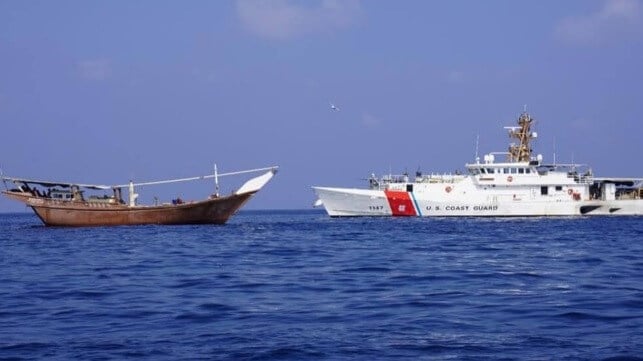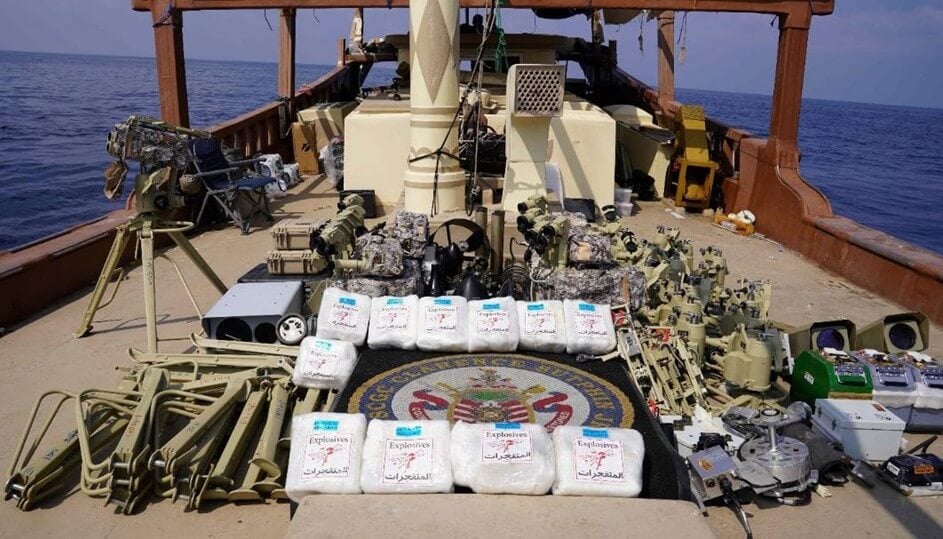Iran's Arm Shipments to the Houthis Continue, a Sign of Trouble Ahead

US Central Command has belatedly confirmed that on January 28, the US Coast Guard Sentinel Class cutter USCGC Clarence Sutphin Jr. intercepted a dhow in the Arabian Sea and discovered a consignment of Iranian arms and explosives on board.
The consignment consisted of components for medium-range ballistic missiles and unmanned sea drones, plus military-grade communication and network equipment and anti-tank guided missile launcher assemblies.
The delay in releasing details of the seizure may have occurred because the US Coast Guard boarding party are also likely to have gathered material which after analysis proved that the consignment had been dispatched from Iran and was en route to Houthi forces in Yemen.

Arms, explosives and equipment seized by USCGC Clarence Sutphin Jr on January 28 (NAVCENT)
The seizure conforms to a well-established pattern, confirmed in annual United Nations Panel of Expert reports. Materiel destined for the Houthis is loaded onto nondescript dhows, manned by stateless crews, from warehouses controlled by the Islamic Revolutionary Guard Corps (IRGC) Quds Force Unit 190 in Chah Bahar, Bandar Abbas and elsewhere. The material is transshipped to fishing vessels from the Yemeni coast, and is then smuggled over beaches and through to Houthi-controlled areas.
In the last year, however, some smuggling dhows have sailed directly into small fishing ports in Houthi-controlled areas of the Red Sea. The Unit 190 logistic plan is to assume that some loads will be intercepted and lost – but if consignments are spread across numerous vessels, enough materiel will get through.
The seizure indicates that Iran still has undiminished intent to keep the Houthis well-supplied, maintaining the dispersed threat that Iran orchestrates through its control of the Axis of Resistance. Hezbollah and Iranian-linked militias in Syria may be much diminished as part of this constellation, but the Houthis remain a potent contributor to the Iranian-controlled capability, and much valued because the Houthis disperse the threat. Stocks of missiles and drones expended before the ceasefire came into effect in the Red Sea, or destroyed by US, Israeli and UK air strikes, all need to be replenished.
The Iranian leadership is nervous about the intentions of the new Trump administration, as well as the threat to the Iranian nuclear program from Israel. Ceasefires in Gaza and Lebanon have provided Israel additional space for maneuvering, and previous attacks on Iran have weakened its air defenses.
In a speech in Tabriz on the 46th anniversary of the Islamic Revolution, Supreme Leader Ali Khamenei acknowledged the increased risk of attack and said that Iran’s ‘capability to counter hard threats is at an "excellent level." Almost all of Iran’s ballistic missile capability - which is spread across 25 underground complexes - remains intact, and would be capable of launching a much heavier attack than Iran’s Operation True Promise-2 launched against Israel on October 1, 2024. Senior IRGC leaders have echoed the threat of an Operation True Promise-3.
Iran is also building up that missile inventory. To meet the solid fuel needs for its production of ballistic missiles, Iran successfully landed 34 containers loaded with sodium perchlorate when the MV Golbon docked in Bandar Abbas last week. Sodium perchlorate is processed into ammonium perchlorate rocket fuel, demand for which Iran is unable to satisfy from domestic sources. A sister ship, MV Jairani, planned to have a similar load on board and is still on its way back from Shanghai.
